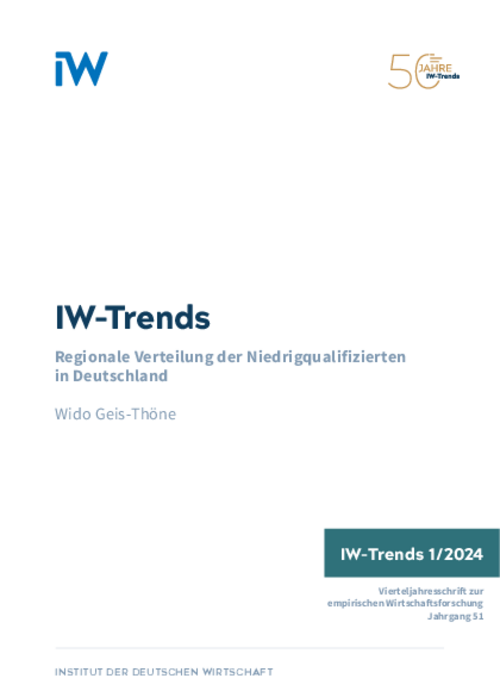Low-skilled workers in Germany are heavily concentrated in urban areas. In 2019, the proportion of 25- to 64-year-olds who had not completed at least two years of vocational training or higher education was almost twice as high in cities with a population of over 100,000 (20.8 per cent) as in small municipalities with fewer than 5,000 inhabitants (10.7 per cent).

The Regional Distribution of Low-skilled Workers in Germany

Low-skilled workers in Germany are heavily concentrated in urban areas. In 2019, the proportion of 25- to 64-year-olds who had not completed at least two years of vocational training or higher education was almost twice as high in cities with a population of over 100,000 (20.8 per cent) as in small municipalities with fewer than 5,000 inhabitants (10.7 per cent).
There is a particular concentration in the Ruhr Valley, where the Emscher-Lippe regional planning area reaches a share of 26.8 per cent. In contrast, the proportion of low-skilled workers in eastern Germany is very low. Both these urban-rural and east-west divides are primarily due to differences in the extent of immigration. Only around half of low-skilled workers aged between 25 and 64 were born in Germany. In the Ruhr, a high level of low-skilled immigration coincides with a large proportion of the population who have failed in the German school system. This is not a homogeneous group, however, particularly with regard to their prospects on the labour market and the support they need. Those who lack not only a vocational qualification but also a school-leaving certificate are particularly vulnerable and their regional distribution varies even more starkly. At 4.3 per cent, their share of 25- to 64-year-olds is more than three times higher in large cities than in small municipalities (1.4 per cent).

The Regional Distribution of Low-skilled Workers in Germany

More on the topic

The Regional Distribution of Graduates in Germany
Graduates in Germany are distributed very unevenly across the country. Taking the population aged between 35 and 44, who have generally already completed their higher education, in 2019 the highest proportions of university graduates were to be found in Berlin ...
IW
Part-time Jobs for Teenagers – A Question of Home Background
A part-time job that does not detract from their other activities can help young people to acquire competences and practise skills which will later benefit them in the labour market.
IW